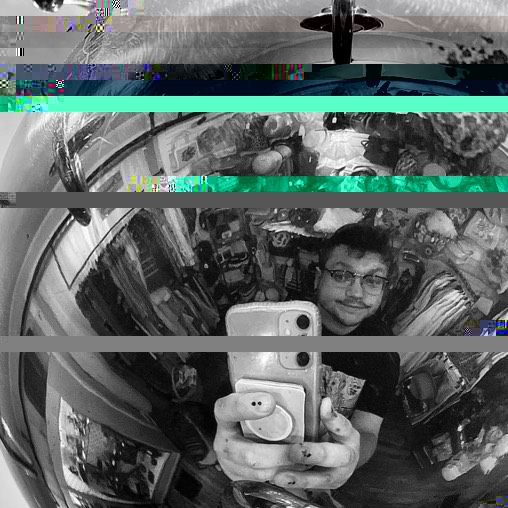Joseph M O'Connor
age ~37
from Framingham, MA
Joseph O'Connor Phones & Addresses
- Framingham, MA
- Brookline, MA
- Brighton, MA
- Needham Heights, MA
Wikipedia References

Joseph O'connor
About:
Died:
1941
Work:
Position:
Irish Republican Army member • Farmer • Captain • Senator
Education:
Specialty:
Leader
Skills & Activities:
Activity:
Cumann na nGaedheal politician
Medicine Doctors

Joseph S O'Connor
view sourceSpecialties:
Obstetrics & Gynecology
Gynecology
Gynecology

Joseph O'Connor
view sourceSpecialties:
Orthopedic Surgeon
Surgeon
Surgeon
Address:
100 East 77Th Street, New York, NY 10075
Name / Title
Company / Classification
Phones & Addresses
CEO
Integrated Healthcare Information Services
Other Individual & Family Svcs
Other Individual & Family Svcs
950 Winter St, Waltham, MA 02451
781 895-9950, 781 895-9951
781 895-9950, 781 895-9951
Director
Oakland Cemetery Lot Owners Assn of Dallas
Director
N-OF-ONE, INC
Health/Allied Services
Health/Allied Services
430 Bedford St STE 390, Lexington, MA 02420
405 Waltham St, Lexington, MA 02421
52 Round Hl Rd, Lincoln, MA 01773
405 Waltham St, Lexington, MA 02421
52 Round Hl Rd, Lincoln, MA 01773
Director
BOSTON FOREIGN COMMERCE CLUB INC
55 Auburn St, West Newton, MA 02465
378 Coronation Dr Franklin Ma 02038 Usa<Br/>378 Coronation Dr, Franklin, MA 02038
378 Coronation Dr Franklin Ma 02038 Usa<Br/>378 Coronation Dr, Franklin, MA 02038
Director
CONECT
Nonprofit Organization Management · Business Services
Nonprofit Organization Management · Business Services
11 Main St SUITE 6, Southborough, MA 01772
508 481-0424
508 481-0424
Treasurer
M O'Connor Contracting Co Inc
General Contractor of New Single-Family & Multi-Family Homes & Commercial Buildings
General Contractor of New Single-Family & Multi-Family Homes & Commercial Buildings
19 Ledge Hl Rd, Boston, MA 02132
PO Box 320277, Boston, MA 02132
617 327-3070
PO Box 320277, Boston, MA 02132
617 327-3070
President
FITNESS TOGETHER PEABODY, INC
39 Cross St, Peabody, MA 01960
Peabody, MA 01960
Peabody, MA 01960
Chairman ,Director
PROFESSIONAL CHOICE HOME CARE AND MEDICAL SUPPLY CO
Us Patents
-
Method Of Fabricating A Belt And A Belt Used To Make Bulk Tissue And Towel, And Nonwoven Articles And Fabrics
view source -
US Patent:7005044, Feb 28, 2006
-
Filed:Dec 31, 2002
-
Appl. No.:10/334211
-
Inventors:Charles E. Kramer - Walpole MA, US
Joseph G. O'Connor - Hopedale MA, US
John Skelton - Sharon MA, US
Maurice Paquin - Plainville MA, US -
Assignee:Albany International Corp. - Albany NY
-
International Classification:D21F 1/10
B05D 1/12
B05D 5/00 -
US Classification:162362, 162116, 162348, 162361, 162903, 4281951, 428147, 442 76, 427195, 427244, 427261, 427288, 4273899
-
Abstract:In a method for manufacturing a belt and a belt for use in the production of bulk tissue and towel, and of nonwoven articles and fabrics, a polymeric resin material is applied onto the surface of a base substrate in a precise predetermined pattern which is to be imparted onto products manufactured with the belt. The polymeric resin material is deposited in droplets having an average diameter of 10μ (10 microns) or more. The polymeric resin material is then set by means appropriate to its composition, and, optionally, may be abraded to provide the belt with a uniform thickness, and a smooth, macroscopically monoplanar surface.
-
Method Of Fabricating A Belt And A Belt Used To Make Bulk Tissue And Towel, And Nonwoven Articles And Fabrics
view source -
US Patent:7014735, Mar 21, 2006
-
Filed:Dec 31, 2002
-
Appl. No.:10/334512
-
Inventors:Charles E. Kramer - Walpole MA, US
Joseph G. O'Connor - Hopedale MA, US
Maurice Paquin - Plainville MA, US -
Assignee:Albany International Corp. - Albany NY
-
International Classification:D21F 1/10
B05D 1/12
B05D 5/00 -
US Classification:162362, 162116, 162348, 162361, 162903, 4283084, 4283142, 4281951, 442 76, 427195, 427244, 427261, 427265, 427288, 4273899
-
Abstract:A method for manufacturing a belt and a belt for use in the production of bulk tissue and towel, and of nonwoven articles and fabrics, requires the application of a sacrificial material onto a base substrate in a predetermined pattern which is to be imparted onto products manufactured with the belt. The sacrificial material is deposited in droplets in a controlled manner so as to control the x, y, z dimension of the material deposited and preferably has having an average diameter of 10μ (10 microns) or more. A polymeric resin material is then deposited on the base substrate in all areas except those on which the sacrificial material has previously been applied. The polymeric resin material is then set by means appropriate to its composition, and the sacrificial material removed. Optionally, the polymeric resin material may then be abraded to provide the belt with a uniform thickness, and a smooth, macroscopically monoplanar surface.
-
Method For Manufacturing Resin-Impregnated Endless Belt Structures For Papermaking Machines And Similar Industrial Applications And Belt
view source -
US Patent:7166196, Jan 23, 2007
-
Filed:Dec 31, 2002
-
Appl. No.:10/334192
-
Inventors:Charles E. Kramer - Walpole MA, US
Joseph G. O'Connor - Hopedale MA, US
Maurice Paquin - Plainville MA, US
John Skelton - Sharon MA, US -
Assignee:Albany International Corp. - Albany NY
-
International Classification:D21F 3/02
B05D 5/00
B05D 1/00
B32B 27/04 -
US Classification:1623584, 162901, 4281951, 428196, 442 59, 427195, 427261, 427288, 4273899
-
Abstract:A method for manufacturing resin-impregnated endless belt structure and belt structure, designed for use on a long nip press on a papermaking machine and for other papermaking and paperprocessing applications, requires the application of a polymeric resin material onto a base substrate in a precise predetermined pattern in droplets having an average diameter of 10μ (10 microns) or more. The polymeric resin material is then set by means appropriate to its composition, and, optionally, may be abraded to provide the belt with a uniform thickness, and a smooth, macroscopically monoplanar surface.
-
Method For Manufacturing Resin-Impregnated Endless Belt And A Belt For Papermaking Machines And Similar Industrial Applications
view source -
US Patent:7169265, Jan 30, 2007
-
Filed:Dec 31, 2002
-
Appl. No.:10/334210
-
Inventors:Charles E. Kramer - Walpole MA, US
Joseph G. O'Connor - Hopedale MA, US
Maurice Paquin - Plainville MA, US -
Assignee:Albany International Corp. - Albany NY
-
International Classification:D21F 3/02
B05D 5/00
B05D 1/00
B32B 27/04 -
US Classification:1623584, 162901, 4281951, 428196, 4283084, 4283142, 442 59, 427195, 427261, 427288, 4273899
-
Abstract:A method for manufacturing resin-impregnated endless belt structures and belt structures designed for use on a long nip press on a papermaking machine and for other papermaking and paper processing applications, requires the application of a sacrificial material onto a base substrate in a predetermined pattern in droplets having an average diameter of 10μ (10 microns) or more. Polymeric resin material is then deposited on the base substrate to cover all areas except those on which the sacrificial material has been previously applied. The polymeric resin material is then set by means appropriate to its composition, and the sacrificial material removed. Optionally, the polymeric resin material may then be abraded to provide the belt with a uniform thickness, and a smooth, macroscopically monoplanar surface.
-
Methods Of Seaming
view source -
US Patent:7238259, Jul 3, 2007
-
Filed:Dec 10, 2003
-
Appl. No.:10/732117
-
Inventors:Joseph G. O'Connor - Hopedale MA, US
Victor P. Laskorski - Attleborough MA, US -
Assignee:Albany International Corp. - Albany NY
-
International Classification:D21F 1/10
D03D 3/04 -
US Classification:1623582, 162348, 162902, 162903, 162904, 428 58, 139383 AA, 24 31 B, 24 38
-
Abstract:A papermaker's fabric and a method of forming a papermaker's fabric, for installation in a papermaking machine. The papermaker's fabric having a plurality of cross-machine, a plurality of machine directional yarns, and a plurality of heat shrunk joints connecting ends of either the machine directional yarns or the cross machine directional yarns to form and continuous loop of fabric. The papermaker's fabric is formed by providing a fixture for securing a plurality of heat shrink tubing sections. Two or more corresponding yarns of the papermaker's fabric are inserted into each of the heat shrink tubing sections and heat is applied to the heat shrink tubing. Upon application of the heat the heat shrink tubing reduces its size to form a tight joint between two yarns inserted therein.
-
Subassembly For Industrial Fabrics
view source -
US Patent:7712336, May 11, 2010
-
Filed:Jan 31, 2007
-
Appl. No.:11/700376
-
Inventors:Joseph Gerald O'Connor - Hopedale MA, US
Maurice Paquin - Plainville MA, US
Dana Burton Eagles - Sherborn MA, US
Francis L. Davenport - Ballston Lake NY, US -
Assignee:Albany International Corp. - Albany NY
-
International Classification:D04B 1/22
-
US Classification:66170, 66190
-
Abstract:A method of manufacturing an industrial fabric comprising the steps of knitting a first fabric strip portion having two widthwise edges and a width that is narrower than the industrial fabric to the desired length of the industrial fabric, forming the first fabric strip portion into an endless loop by joining the widthwise edges with a CD seam, placing the first fabric strip portion around two rotatably mounted rolls and knitting a second fabric portion to the desired length of the industrial fabric, where knitting of the second fabric portion proceeds along the first edge of the first fabric portion and is a knitted continuation thereof. Alternatively, knitted fabric strips can be joined together in a spiral fashion to create a full width industrial fabric.
-
Process For Producing Papermaker's And Industrial Fabrics
view source -
US Patent:7897018, Mar 1, 2011
-
Filed:Sep 5, 2007
-
Appl. No.:11/899245
-
Inventors:Joseph G. O'Connor - Hopedale MA, US
Maurice R. Paquin - Plainville MA, US
Maryann Kenney - Foxboro MA, US
Dana Eagles - Sherborn MA, US
Jeffrey Scott Denton - Canton NC, US
Lynn F. Kroll - Sherwood WI, US
Jennifer L. Bowden - Pittsville WI, US
Amit Ganatra - Attleboro MA, US
John Michael Dempsey - Norton MA, US -
Assignee:Albany International Corp. - Albany NY
-
International Classification:D21F 1/10
D21F 7/08
D21F 7/10
D21F 7/12 -
US Classification:162348, 1623582, 162900, 162902, 162903, 162904, 1562728
-
Abstract:The invention discloses herein the use of short wavelength infrared energy to selectively control the locations where thermal fusing or bonding takes place or does not take place in an industrial fabric. Also, the method involves forming a mushroom cap on the tail of a fiber/yarn or monofilament and also creating a surface pattern formation.
-
Embossed Fabrics And Method Of Making The Same
view source -
US Patent:20030168194, Sep 11, 2003
-
Filed:Mar 17, 2003
-
Appl. No.:10/390459
-
Inventors:Joseph Botelho - Lincoln RI, US
Jeffrey Denton - Mendon MA, US
James Donovan - Norwell MA, US
John Hawes - Averill NY, US
Joseph O'Connor - Hopedale MA, US
David Rougvie - Appleton WI, US -
International Classification:D21F001/00
-
US Classification:162/289000, 264/284000, 264/324000, 162/109000
-
Abstract:An industrial process fabric is embossed in a device, such as a continuously operating two-roll calender having a preselected embossing pattern. The roll(s) of the calender may alternatively themselves be engraved or etched to provide the embossing. Embossing takes place with controlled temperature, pressure, speed and gap (between the rolls) settings. The fabric may be a forming, press, dryer or TAD fabric used in paper and pulp production, pulp forming fabric or an engineered fabric used to produce nonwoven textile products by meltblowing, spunbonding, hydroentangling or air laid needle punching.
Lawyers & Attorneys

Joseph O'Connor - Lawyer
view sourceOffice:
Joseph J. O'Connor, Esq.
Specialties:
Residential Real Estate
Trusts & Estates
Wills
Real Property
Business Incorporations
Business Closings
Trusts & Estates
Wills
Real Property
Business Incorporations
Business Closings
ISLN:
904736999
Admitted:
1972
University:
St. Francis College, B.A., 1964
Law School:
St. John's University, J.D., 1971

Joseph O'Connor - Lawyer
view sourceOffice:
Bartlett LLP
ISLN:
910096933
Admitted:
1996
University:
Cornell University, B.A., 1988
Law School:
St. John's University School of Law, J.D., 1995

Joseph O'Connor - Lawyer
view sourceOffice:
O'Connor, Joseph E.
Specialties:
General Practice
ISLN:
904737026
Admitted:
1963
University:
San Diego State University, B.S., 1955
Law School:
University of San Diego, LL.B., 1962
Real Estate Brokers

Joseph O'connor, Boston MA
view sourceSpecialties:
Buyer's Agent
Listing Agent
Listing Agent
Work:
Summit Realty Group LLC
130 Bowdoin Street, Boston, MA 02108
617 419-5260 (Office)
130 Bowdoin Street, Boston, MA 02108
617 419-5260 (Office)
Youtube
Googleplus

Joseph O'connor
Work:
Antique Kids Photography - Printer/Editor (2010-2010)
Education:
Sinclair Community College - Visual Communcations, Kettering Fairmont

Joseph O'connor
Work:
Miller Mortgage
Millagio - Dealer
Millagio - Host
Millagio - Dealer
Millagio - Host

Joseph O'connor
Education:
New Brunswick Community College - Electronic Game Design (Programming)

Joseph O'connor
Work:
Home

Joseph O'connor

Joseph O'connor

Joseph O'connor

Joseph O'connor
Flickr
Get Report for Joseph M O'Connor from Framingham, MA, age ~37













